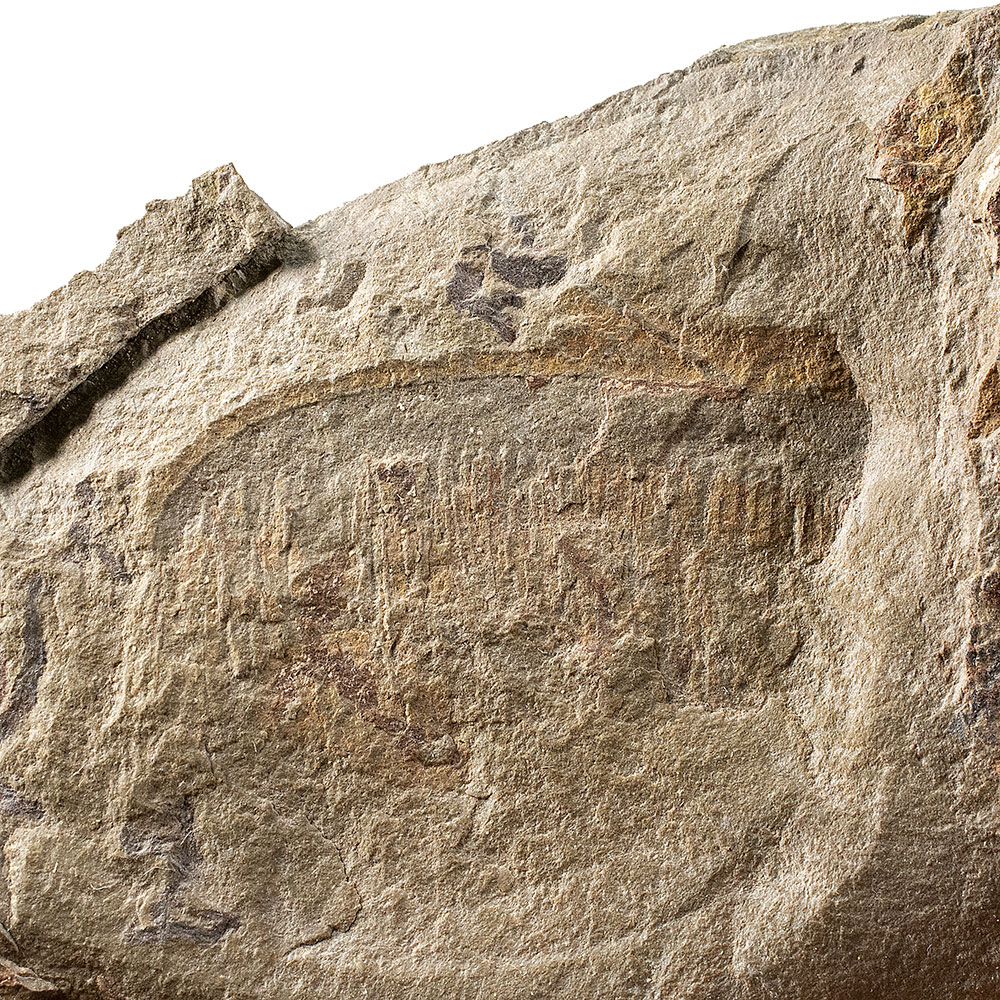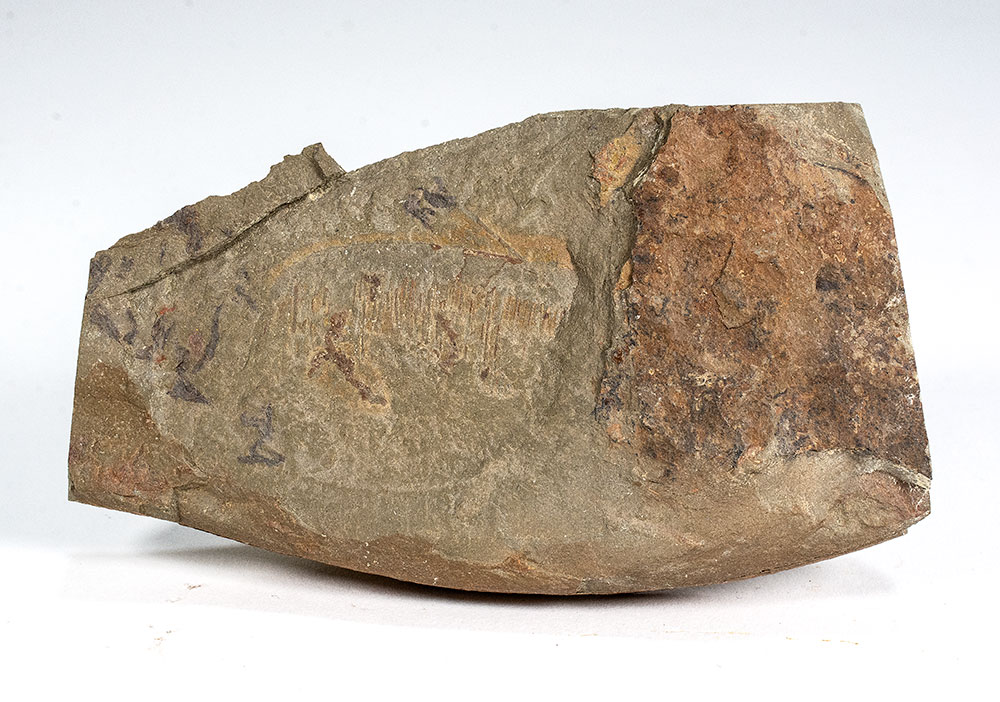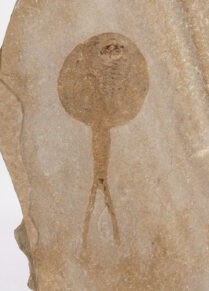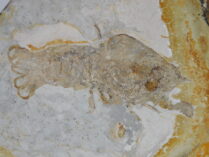Description
Hurdiid anomalocarid appendage – Pseudoangustidontus duplospineus
Ordovician
Upper Fezouata Formation
Zagora Morocco.
34mm appendage on 75mm slab. Faint, but detailed. Exceedingly rare in the Ordovician.
Anomalocaridids are an extinct group of actively-swimming arthropods called radiodont best known from the Cambrian but surviving into the Devonian. In the Cambrian they were the largest predators on earth at about 3 feet in length. In the Ordovician one form was twice the size but had evolved into a filter-feeder. Only some nautiloids of the time were larger.
Once thought to have died out by the end of the Cambrian, an anomalocaridid was described from the Early Devonian of Germany (Hunsruck Shale) in 2009.
Have a look at this amazing 3D model of a related radiodont courtesy of Google and darwinmuseum.ru. Click on the arrows at the bottom right corner to see it full screen!






